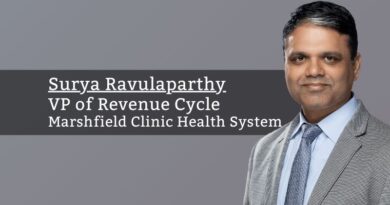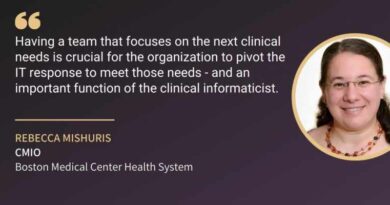Clinical IT Governance – How to Find the Right Fit and Framework
By Neal Chawla, MD, CMIO, WakeMed Health & Hospitals
Clinical governance of IT systems can be challenging, but it is a framework for success that continues to gain ground across the health care industry. Now more than ever, IT plays a critical role in every aspect of the health care continuum – from clinical care and patient outcomes to daily operations, infrastructure and financial performance. While many organizations have governance in place, the approach is not one size fits all.
Clinical IT governance is an iterative process. To remain effective, strategic and to truly leverage technology to achieve goals, it is key for IT governance to change and evolve alongside the organization. Think of IT governance as an extension of an organization’s mission and identity. So as a company grows, innovates and builds a strong culture, so should this framework. Proper IT governance ensures that IT initiatives, processes and investments align with an organization’s strategic plan and benefit leadership, clinical staff and most importantly, patients.
We can get a lot of mileage out of educating our colleagues about clinical IT governance. When creating an IT governance process, it is important to consider what type of framework may work best for your organization – *at this point in time.*
Tighter Governance
Governance can be very buttoned-up and disciplined. A highly structured governance framework can exist with multiple levels, from the front lines to executive leadership, with issues passing through the lines until approved at the right levels. This can give an organization a clear, defined channel and chain of command. It leaves no room for doubt as to where a decision will be made and who will be at the table and have a voice and vote.
When a controversial issue needs to be decided upon, tight governance can give you definitive answers. As an organization becomes more strategic and needs to prioritize projects to match their resources, tight governance can set scope and priorities.
On the other hand, tight governance can be overly bureaucratic. An issue may go through three layers or more before being approved, which adds both hurdles and hoops – and time. It can also take significant resources, time and discipline to maintain a tight governance. With tighter governance, the ‘process’ should not be the goal, but rather the outcomes.
Depending on who makes up each group and what issues they decide on, there may be a risk of having people with a voice and vote who may not have the right expertise. There is also a concern that the frequency of meetings related to governance could result in too much informational discussion and less action in the long run. In a health care setting, this system may leave clinicians with the feeling that the politics of governance will trump good decision-making and, as a result, disengage providers if they view their participation as not worth the time away from clinical duties.
Looser Governance
A looser governance structure can allow a system to be nimble. A more flexible IT governance can turn discussions into action at a faster pace. More decisions can be made with less formality and more ‘work’ can get done.
This can be a wise approach for less complex projects, when following a strict set of formalities can seem like a waste of time and resources. In addition, ad hoc groups made up of people with the right expertise can be brought into discussions to get the right people in the room for a decision at the right time. It takes less administrative effort to coordinate looser governance while still ensuring that the processes are sound.
However, doing more work isn’t always better, especially when the work being done isn’t part of a strategic plan or roadmap. Looser governance can sometimes make it more difficult for an organization to create and follow a disciplined strategy – especially if there is a disagreement on an issue. In these situations, it takes strong leadership to get the right folks to the right decision. Without it, an organization may become paralyzed and swirl on a decision too long.
What is the right governance fit for an organization?
There is no right answer. It depends.
Through different times in an organization’s maturity, the sweet spot between tighter and looser governance is a shifting target – being able to balance is important. There are times when an organization needs to move quickly, when looser governance and less bureaucracy may be needed. There are also times when organizations need to be very strategic and disciplined, where tighter governance can be more advantageous.
An organization can find that balance and over time define criteria to identify what issues need a strict framework versus a more flexible approach. For example, small changes that help clinicians’ efficiency to help them better get through the day probably fare better with looser governance. Contrastingly, controversial topics may do better with tighter governance if your committees have the right people. For larger projects that will take more resources and need to engage and align more people, tighter governance may also be most appropriate. Especially in cases when it is more important to do things ‘right’ rather than ‘fast.’
There may be times when IT clinical governance swings tighter or looser depending on an organization’s current goals. It is important to understand the balance, make ongoing evaluation part of the process and, in most circumstances, avoid the extremes.



